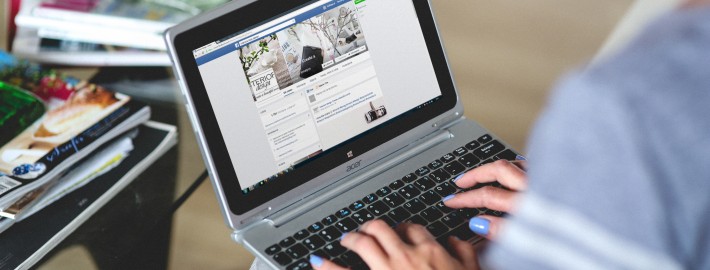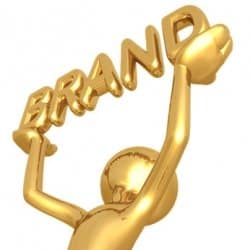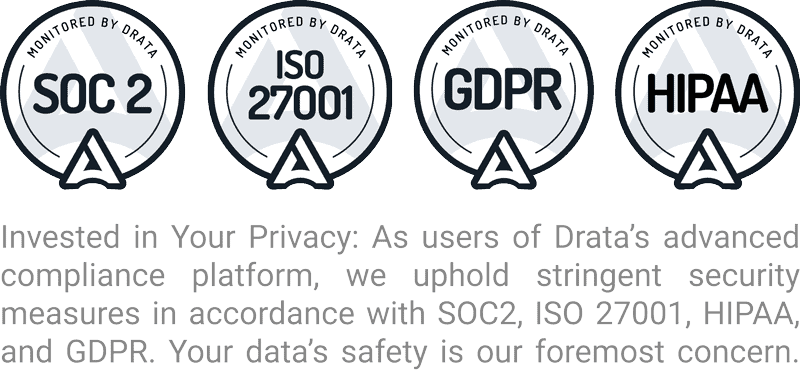Company Shirts: Pros, Cons, & Tips
My office just received an order of company t-shirts that we intend on giving away to current and prospective clients, as well as wearing ourselves. It’s not the first order, and it won’t be the last. But, it got me thinking. Company shirts are a pretty standard category of “swag.” And, rightfully so. They can be used for employees (in both B2B and B2C businesses), current clients, and even prospective clients. But really, are company shirts worth the investment?
The “Pros” of Investing in Company Shirts
A well-designed company shirt can be extremely versatile, but the end goal is to create brand awareness. There are several avenues of creating brand awareness. While much of marketing’s focus is on your prospective clients, brand awareness is also important for your current base of clients and even your employees. Everyone wants to be a part of something great. And a t-shirt is an easy way to make a statement – heck, it’s a walking billboard! Company shirts can create a sense of unity amongst your employees, make new clients feel like a part of a really cool family, and spark interest with your prospective client. The more your prospects see your brand in day-to-day life, the more they will trust your business.
Local screen printers are easy to find, and your choices for a designer is not limited to your area. Our designer lives more than 800 miles away from our screenprinter. We live in a modern world; we are not limited by the location of our partners and vendors. Find a designer that fits your company culture (if you don’t already have one on staff), then choose your screen printer based on the quality of shirts they have available in addition to their reputation. And if you prefer to do everything online, companies like UberPrints.com allow you to design your own t-shirts in their online studio. They also offer free shipping (bonus!). We have lots of experience with thier work, and it’s great quality.
Company shirts, or marketing shirts specifically, can make you money. I love this article by Sujan Patel, in which he explains how giving away t-shirts made him over $500k in revenue. Patel says, “I posted to Facebook to see who wanted a few shirts and was surprised when I ran out just a few hours after I put up the message. Clearly, there was a demand for my shirts! Since my supply was short, I put together an email list of people who were interested and started sending out the shirts with personalized notes. Not only did this allow me to help capture people’s physical addresses for use in future t-shirt giveaways, my friends were so excited that they personally thanked me on Facebook and started wearing the shirts around town.” He goes on to explain how giving away all of those shirts made him money. The project helped him strike up business conversations, it helped him get into larger companies, and it helped him grow his brand recognition.
The “Cons” of Investing in Company Shirts
“Logo shirts” are typically the first to go in a closet purge (unless the quality of the shirt warrants keeping). If you’re going to do this project, you need to make sure you do it right. A high quality t-shirt and a modern, simple design will be the keys to keeping your shirts in rotation.
Predicting the future is hard. How do you determine how many of each size you’ll need? I’ll tell ya – this is probably one of the hardest parts of the t-shirt buying process. It’s hard to straddle the line between staying within budget, but also having enough shirts to cover your potential need. And, if you are buying t-shirts without the wearers in mind (like your employees), it’s impossible to know what size you need. My best advice is to hop on a LinkedIn group in your industry and ask. Also, go ahead and mentally prepare for the fact that your numbers will be slightly off. That’s okay! You can always order more.
Tracking ROI is hard. It’s difficult to quantify the return on investment to expect for each shirt you give away. RealThread.com helps quantify that. “According to the Ad Speciality Institute, the average giveaway t-shirt gets worn 4.32 times per month and earns 365 impressions per month, with an impression being any time the shirt is viewed or seen. Assuming that your t-shirt is kept for even just one year, that’s 4,380 impressions per t-shirt.” So, if your t-shirt cost is $9.00/shirt, your cost per impression would be $.002/impression. Not bad.
Tips
Sizing
Sizing will always be an issue, as I stated before. But it’s important to make an educated guess. The most common t-shirt size for adults is a Large. But this will vary based on your percentage of men vs women. It’s also a good idea to skew the sizes slightly to the bigger size, since it’s easier to fit someone in a larger shirt than it is to fit in a shirt that’s too small. This Quora article provides this simple ratio:
- Small: 1
- Medium: 2
- Large: 2
- XL: 1
- 2XL: .5
Design
Keep your design simple and do NOT skimp on quality. You want to appeal to a wide audience with your design, so the more simple the better. This guide from Bonfire gives even more tips and tricks to designing the perfect shirt. Try to keep the sales-y stuff out of your design. It’s 2018 – people know how to search for your business online. They don’t need your logo and your URL and your phone number on their clothing. That’s all too distracting. Remember, your main goal is to create unity and brand awareness. The rest will come.
You want people to be more inclined to actually wear your shirt, rather than wash their car with it. A cotton-polyester blend is pretty common and probably most suitable for everyday use. The cotton fiber makes it easy to care for and clean, while the polyester increases wrinkle resistance. And don’t forget to ask your t-shirt vendor for a sample. Most will decline, but if you call and ask, you might get special treatment. Remind them that it’s better to send a sample, than re-print an entire order because the t-shirt is unsatisfactory. Once you have the sample, wear, wash, and re-wear the shirt. Keep an eye on how much/if it shrinks
Ideas for how to use your company shirts:
- Lead Generation
- Offer a free shirt online, in exchange for contact information.
- Give away a t-shirt as a reward for signing up for a webinar.
- Use t-shirts to incentivize prospects to fill out a survey or quiz.
- For Current Clients
- Use company shirts to keep your brand in the mind of your best customers at all times (they are your biggest advocates, after all!).
- Make a limited run of shirts that are only given to VICs (Very Important Clients).
- Give away a t-shirt as a reward for a client completing an educational course on a subject in your industry. For example, we offer free educational courses on our software. We could give a t-shirt as a reward for completing a set of software training courses.
- For Employees
- Use company shirts to unite a team in vision.
- Use company shirts to celebrate an important anniversary or other company milestone.
- Give your employees a company shirt so that they can rep your brand outside of work.
- [B2B] Use different color t-shirts to help employees easily recognize team members (the technology department wears blue, the finance department wears green, interns wear orange, etc.).
- [B2C] Improve customer satisfaction by making it easy for customers to spot the nearest employee to assist them, thus improving their overall experience.
- Take a group photo of all of your employees wearing the same shirt. This image can be used on your “Meet the Team” webpage, and will help prospective clients feel comfortable knowing that your company is truly a “team.”
An Extra Tip (…and Shameless Plug)
Marketing t-shirts can also be incorporated in your lead nurturing if your company uses marketing automation. Lead Liaison’s Lead Management Automation (LMA)™ solution allows for direct mail actions to be included in any drip campaign (aka: an automation). This includes the functionality to send marketing material (like t-shirts, company pens, etc.) automatically to key Prospects (let’s say, with a lead score above 900). To learn more about this and any of the other amazing capabilities of Lead Liaison, request a demo here.








